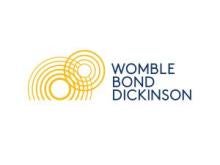One year has passed since the Court of Appeals for the Federal Circuit made its landmark decision in LKQ Corp. v. GM Global Tech. Operations LLC, which overruled the longstanding Rosen-Durling test for determining design patent obviousness. While it is still too soon to assess whether the ruling will drastically shift invalidity results, we are still seeing some movement in legal trends.
On May 21, 2024, the CAFC handed down its first en banc decision in a patent case in six years, holding that the obviousness analysis for design patents was “improperly rigid,” and that it needed to be aligned with the obviousness test for utility patents.
Now, one year removed, certain district courts and the Patent Trial and Appeal Board have decided cases addressing LKQ. Few decisions, however, have applied the new standard in earnest. Accordingly, LKQ’s full impact likely will not be felt until there is a larger body of case law fully exploring the new obviousness standard for design patents.
Year One Rulings
While data is limited, the pool of available decisions suggests that changes will be incremental and less explosive. For example, while the general consensus was that there would be a spike in post-grant proceedings at the PTAB, the PTAB has not granted any post-grant proceedings since LKQ has been decided; all three post-petitions post-LKQ have been denied.1 Although this data tells us little about how difficult it will be to invalidate a design patent post-grant, the data may suggest that the PTAB may be finding utility patent cases more instructive than observers originally thought, especially when making a decision to institute a proceeding. Specifically, the board noted that the challengers failed to show why there would be a motivation to combine earlier designs to arrive at the claimed design and that challengers were making obviousness arguments that relied on hindsight.
Similarly, we have not seen any district court decisions within the last year invalidating a design patent for being obvious. In fact, the United States District Court for the Southern District of Indiana granted a motion for summary judgment in favor of the plaintiff, finding the design patents at issue valid, despite the defendant arguing that the patents were obvious.2 And in another case out of the United States District Court for the Northern District of Illinois, the court found that the defendant did not raise a substantial question as to the validity of a design patent in an analysis of whether to grant a preliminary injunction because the defendant failed to present evidence and argument for all the Graham factors.3
It is worth noting that these cases have not grappled with many of the questions left open by the CAFC, so it is highly likely that we will continue to see gradual evolutions in limited body of law for design patent obviousness. For example, none of the decisions have grappled with whether designs from different fields can be considered “analogous art” for the first Graham factor. By way of another example, we have not seen a decision yet that has tackled what constitutes a motivation to combine designs under the last Graham factor, or what can serve as objective evidence that a design is not obvious. What’s more, secondary considerations of obviousness or non-obviousness such as long felt need, failure of others, and unexpected results all need to be addressed at some point by the district courts and / or the PTAB. These are all issues that the CAFC left open in its landmark LKQ decision because those issues did not arise under the previous Rosen-Durling test.
Key Takeaways
One year is a marginal amount of time in the American legal system. And given that we have not seen a lot of design patent obviousness challenges in the first year following the LKQ decision, there are no long-term conclusions to take away from the limited data set that is available. Since utility patent cases far outweigh design patent cases, it is likely that it will take a few years before notable developments are made to the new framework of design patent obviousness.
1 Next Step Grp., Inc. v. Deckers Outdoor Corp., IPR2024-00525, Paper 16 (PTAB Aug. 6, 2024); A&A Glob. Imports, Inc. v. Lerman Container Corp., IPR2024-01138, Paper 7 (PTAB Jan. 22, 2025); Arashi Vision (U.S.) LLC v. GoPro, Inc., IPR2024-01434, Paper 9 (PTAB Mar. 31, 2025); see also PTAB Trial Statistics FY24 End of Year Outcome Roundup: IPR, PGR, USPTO, at 8, https://www.uspto.gov/sites/default/files/documents/ptab_aia_fy2024__roundup.pdf (reporting 0% (0 of 2) institution rate for Oct. 1, 2023 to Sept. 30, 2024); PTAB Trial Statistics FY 25 Q2 Outcome Roundup: IPR, PGR, USPTO, at 8, https://www.uspto.gov/sites/default/files/documents/ptab_aia_fy2025_q2_roundup.pdf (reporting 0% (0 of 2) institution rate for Oct. 1, 2024 to Mar. 31, 2025).
2Gema USA, Inc. v. First in Finishing Inc., No. 1-22-cv-02053, D.I. 129 at 5-10, 14-15 (S.D. Ind. Mar. 27, 2025).
3Gong v. The P’ships and Unincorporated Ass’ns Identified in Schedule A, Defendants, No. 24 CV 2985, 2024 WL 5679176, at *3 (N.D. Ill. Nov. 26, 2024).



 />i
/>i

